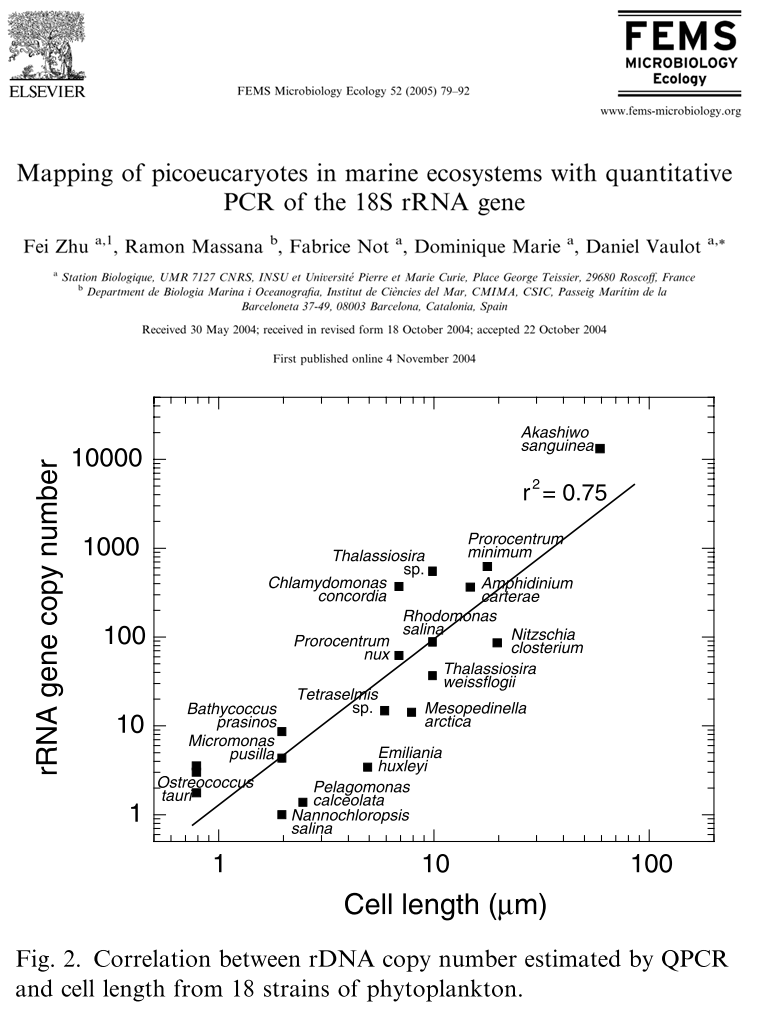
Mapping of picoeucaryotes in marine ecosystems with quantitative PCR of the 18S rRNA gene
Abstract
A quantitative PCR (QPCR) assay based on the use of SYBR Green I was developed to assess the abundance of specific groups of picoeukaryotes in marine waters. Six primer sets were designed targeting four different taxonomic levels: domain (Eukaryota), division (Chlorophyta), order (Mamiellales) and genus (Bathycoccus, Micromonas, and Ostreococcus). Reaction conditions were optimized for each primer set which was validated in silico, on agarose gels, and by QPCR against a variety of target and non-target cultures. The approach was tested by estimating gene copy numbers for Micromonas, Bathycoccus, and Ostreococcus in seawater samples to which cultured cells were added in various concentrations. QPCR was then used to determine that rRNA gene (rDNA) copy number varied from one to more than 12,000 in 18 strains of phytoplankton. Finally, QPCR was applied to environmental samples from a Mediterranean Sea coastal site and the results were compared to those obtained by Fluorescent in situ hybridization (FISH). The data obtained demonstrate that Chlorophyta and more specifically Mamiellales were important in these waters, especially during the winter picoplankton bloom. The timing of major abundance peaks of the targeted species was similar by QPCR and FISH. When used in conjunction with other techniques such as FISH or gene clone libraries, QPCR appears as very promising to quickly obtain data on the ecological distribution of important phytoplankton groups. Data interpretation must take into account primer specificity and the varying rRNA gene copy number among eukaryotes. ?? 2004 Federation of European Microbiological Societies. Published by Elsevier B.V. All rights reserved.